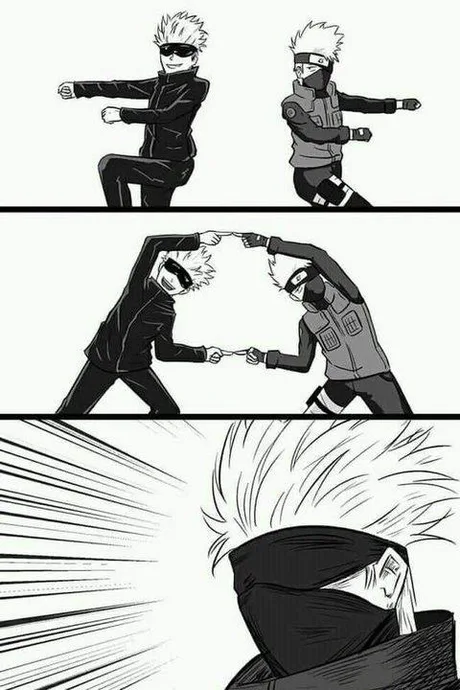Yeah, I exaggerated it, but this is what I meant.
Have you guys read this theory by Mallua about Sukuna's CT?
@Seth @NikaInParis @Light D Lamperouge @Rhea
#CopyPaste
Sukuna CT Explained. (Feretory Theory)
Thunder Arrow Theory is WRONG. Sukuna’s CT Explained. (Feretory Theory)
(by mallua)
In chapter 217, Yorozu calls Sukuna’s technique mizushi which was translated as “shrine.” (read: VIZ calling it “Malevolent Shrine” is a mistranslation). Even this translation can still be improved though. It's best to translate mizushi as “feretory” instead of “shrine.” This is because the word “zushi” (read: the prefix “mi” is just an honorific and can be dropped without changing the meaning of the word) is defined as a small box that can store holy or unholy relics. A “shrine” on the other hand is a place of worship and thus is not an appropriate translation.
Sukuna’s cursed technique is inspired by a one-shot that Gege wrote called No. 9. where the main character stores weapons in a box, and accesses them by chanting “fuuga.” Sukuna uses the same chant against Jogo and Mahoraga to access his Fire Arrow. Instead of storing generic weapons in a box, however, Sukuna stores cursed tools. This is why the distinction between a shrine and a feretory is important, as unlike a shrine which is meant for praying, a feretory’s main purpose is storage.
This theory is supported by the fact that we know very little about cursed tools in the first place. The first cursed tool, Slaughter Demon, was introduced in chapter 4, yet nearly 200+ chapters later, we still know very little about how tools are made outside of the bath ritual. It’s unlikely that every cursed tool was made through the bath ritual, like Miguel’s Rope or Juzo’s Dragonbone. Simultaneously, because cursed tools were introduced so early, it’s highly probable that Sukuna’s ability is related to this early JJK concept.
In the cover of Chapter 117, Sukuna has already been shown holding two cryptic cursed tools. If you remember the analysis from Thunder Arrow theory, I determined the trishula corresponded to the Fire Arrow and the vajra would correspond to a Thunder Arrow. I also explained the divine nature of the weapons. In the fanbook, Gege adds a inconspicuous category of cursed tools known as shingu, or “divine instruments.” It’s likely that both the vajra and trishula are divine instruments because they take on connotations of hindu Gods Shiva and Indra respectively. The Fire Arrow is likely a reference to Pashupatastra which took the exact form of a Fire Arrow and had the capability of destroying the universe. The vajra, translated as “thunderbolt,” was Indra’s strongest astra weapon. They are stored in mizushi already.
In the Hindu epic Mahabharata, both the Pashupatastra and Vajra were gifted to a mortal warrior named Arjuna. This draws strong parallels to the cursed tool that Yorozu is constructing and gifting as a memento to Sukuna at the end of Chapter 219, just as Mai did for Maki. Considering this pattern of gifting, it’s possible that Sukuna may only be limited in storing cursed tools in mizushi which have been consensually donated or gifted to him. This binding could make it such that the characteristics he draws from the cursed tools are powered up beyond what they normally would be. We see in Chapter 219 that his position as a deity and a subject of worship may have given him a favorable position upon which he could receive cursed tools as a form of pacification. Further, it would add an interesting contrast from Yuta and Kenjaku who copy and steal bodies indiscriminately but have limitations when using those abilities. In contrast, Sukuna is limited in what can be stored in mizushi but can access those abilities unfettered.
In fact, Arjuna (Sukuna) is well-known for being spurred by Krishna to kill Karna, another mortal, who is known for being gifted Indra’s second strongest weapon, the Vasavi Shakti. This weapon of lightning, despite being weaker than the Vajra that Sukuna already possesses, has the unique quirk of being able to kill even Gods, at the expense of only being able to be used once. Karna draws strong parallels with Kashimo and his one-time cursed technique. Karna was not able to use Vasavi Shakti on Arjuna who was his intended target, but had to use it on Ghatotkacha instead. This could indicate that Kashimo is forced to use his cursed technique on someone that is not Sukuna, likely Mahoraga. Considering Hinduism is a minority religion in Japan at about 0.1% of the population, it’s possible that Gege can be drawing on the Mahabharata for literary inspiration without tipping off the native Japanese fanbase.
So when Sukuna chants fuuga or “open” Sukuna is accessing the characteristics of the cursed tools stored inside his feretory by opening its outer doors. See below for a visual of what a feretory looks like:
So then the initial premise in Thunder Arrow theory that Sukuna had four cursed techniques was completely incorrect. He has one cursed technique, his mizushi, whose ability is to draw upon the characteristics of the cursed tools stored inside. This single technique likely scales infinitely like other special-grade techniques so far, in the sense that there is no limit to how many cursed tools can be stored as long as the conditions are met. Gege even hints at Sukuna only having one technique with multiple characteristics in the fanbook: “Cursed techniques commonly only have one characteristic, but Sukuna’s technique has been confirmed to have at least two - slashing and flames.” We know the higher the grade of the cursed tool, the greater the advantage given to the user in a jujutsu battle. It’s likely that all of the tools stored in mizushi are special-grade-equivalent or stronger.
Acknowledgements
With help Max from the JJK Discord for the differences between a “shrine” and “feretory” and Yenz for the “Vasavi Shakti” theory.







